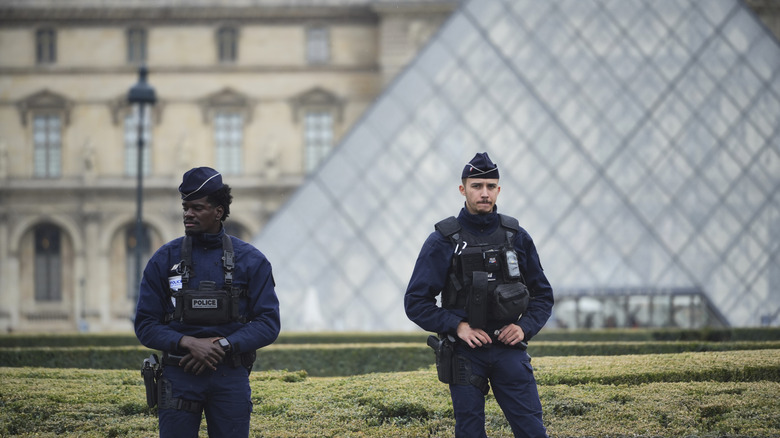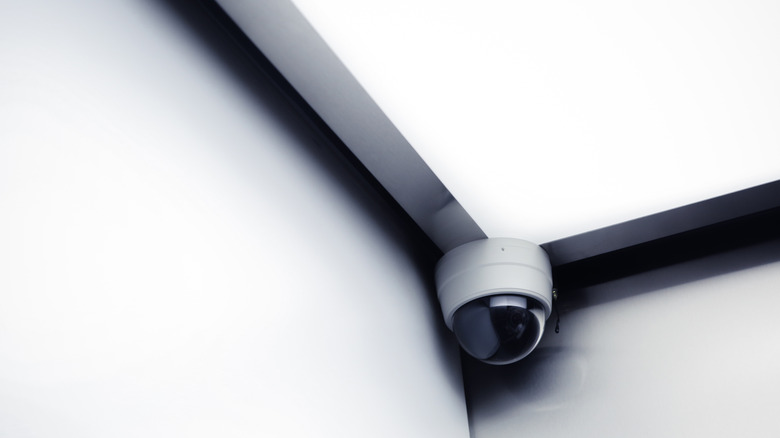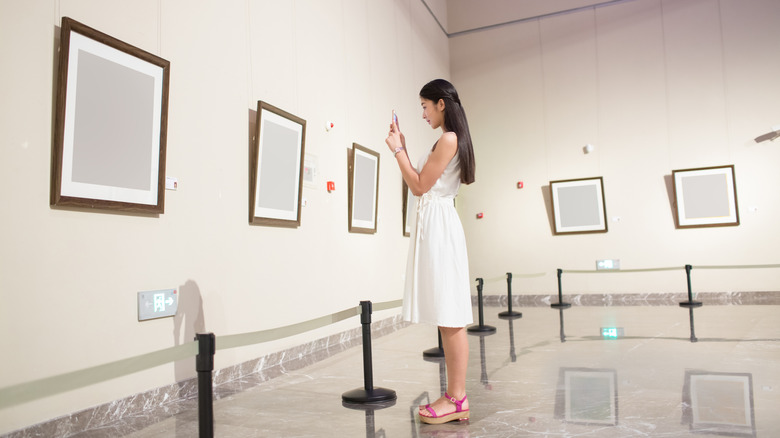What The Daring Daylight Heist At Paris' Louvre Means For Tourist Safety At Museums
In a daring heist that shocked the world — and quickly inspired a wave of memes and TikTok trends — masked thieves broke into Paris' world-renowned Louvre Museum in broad daylight during opening hours and stole pieces from the French Crown Jewels collection in just seven minutes. Located just steps away from the "Mona Lisa," the collection was considered one of the museum's finest and included jewels worn by Empress Eugénie — Napoleon III's wife – Queen Marie-Amélie, and Queen Hortense — collectively valued at $102 million. Three days later, the Louvre reopened to business as usual. Still, the incident left many wondering not only how such a breach happened, but whether the museum's security — and visitor safety — is as strong as it seems. Paris is already known as a pickpocketing hotspot targeting tourists, so a heist of this caliber raises deeper questions about how prepared cultural institutions really are to protect priceless art and the millions who come to see it.
To gain entry, thieves used a mechanical lift and ladder mounted to a truck outside the Galerie d'Apollon. With battery-powered angle grinders, they sawed through a windowpane, scared off guards, and shattered two glass display cases. As they fled on scooters, they tried to set their truck on fire, but were deterred by the staff.
According to The New York Times, the Louvre's permanent collection is of "inestimable cultural and historical value," thus would cost billions to privately insure, presumably far more than investing in surveillance and security. The museum has in-house firefighters, but a pre-heist audit, leaked after the robbery, found that 75% of the museum's Richelieu wing lacked surveillance cameras, and a third of the Denon wing's rooms — where the jewels were located — had none at all.
The Louvre is about to get a decade-long makeover
One stolen item — Empress Eugénie's crown — was found damaged outside the museum shortly after the robbery. As of October 27, 2025, no additional jewels have been recovered, but at least two suspects have been detained. Although France's Culture Ministry maintains alarms were triggered and protocols followed, the museum's director admitted that there were not enough surveillance cameras on the perimeter and that security protocols had failed — she even offered to resign in response. When the museum reopened days later, visitors reported no visible increase in safety measures. "I didn't notice extra security — guards as always, and no police inside," a visitor from Madrid told NBC. "It felt like a normal day."
A 10-year renovation of the Louvre, estimated to cost $932 million, was announced before the heist in early 2025 to address security updates, climate control improvements, and expanded space for chronic overcrowding. During the summer, Louvre staff even went on strike to protest overtourism, which has been damaging the museum's priceless collection. It's far from the first time the museum has been targeted by thieves, but according to The New York Times, the heist highlights the museum's outdated sense of security and delayed prioritization of "indispensable work," aka security improvements. Adding to the problem, security guards in France aren't paid well, and training is often deprioritized. "The Louvre is a palace that doesn't have the logic of a museum," the president of the Society of Friends of the Louvre, Gérard Araud, told the outlet. "It is a universe unto itself."
Now, the renovations allocated to address the audit's recommendations include additional CCTV coverage and improved security protocols. With these measures in place, the museum hopes to remain off the list of dangerous destinations to avoid on your next vacation to France.
The heist may re-write safety protocols for museums worldwide
"This robbery may rewrite museum security protocols," Nikos Passas, professor of criminology and co-director of Northeastern University's Institute for Security and Public Policy, who analyzed the low-tech precision of the Louvre thieves, told Northeastern Global News. "This lift, cut and escape is just stunning. How on earth can this happen in the center of Paris?" Christopher Marinello of Art Recovery International echoed this thought: "If they're going to hit the Louvre, one of the most well-funded museums in the world, every museum is vulnerable," he shared with Business Tech Weekly.
Museums worldwide are now reassessing their security protocols and network systems, but in an increasingly high-tech age, the analog simplicity of the Louvre robbery — without sophisticated hacking or explosives — poses an unsettling security challenge. For visitors, this could mean tighter screenings, longer queues, and restricted access to certain collections, or more art behind reinforced glass. Still, the Louvre heist shouldn't deter travelers, but rather serve as a reminder to stay alert in crowded venues and mindful of personal belongings while museums adapt to a new era of risk.
A few historic museum robberies have led to major security upgrades — most notably, the 1990 Isabella Stewart Gardner Museum heist in Boston, where two thieves disguised as police officers tied up the guards and stole 13 masterpieces valued at $500 million. The works were never recovered, and the crime remains unsolved. In response, the museum installed motion detectors, exterior CCTV systems, and hired more guards, though interior cameras were considered too cost-prohibitive. The empty frames where the stolen paintings once hung remain on display today, a sobering reminder of the delicate balance between protecting art and keeping it accessible to the public.


